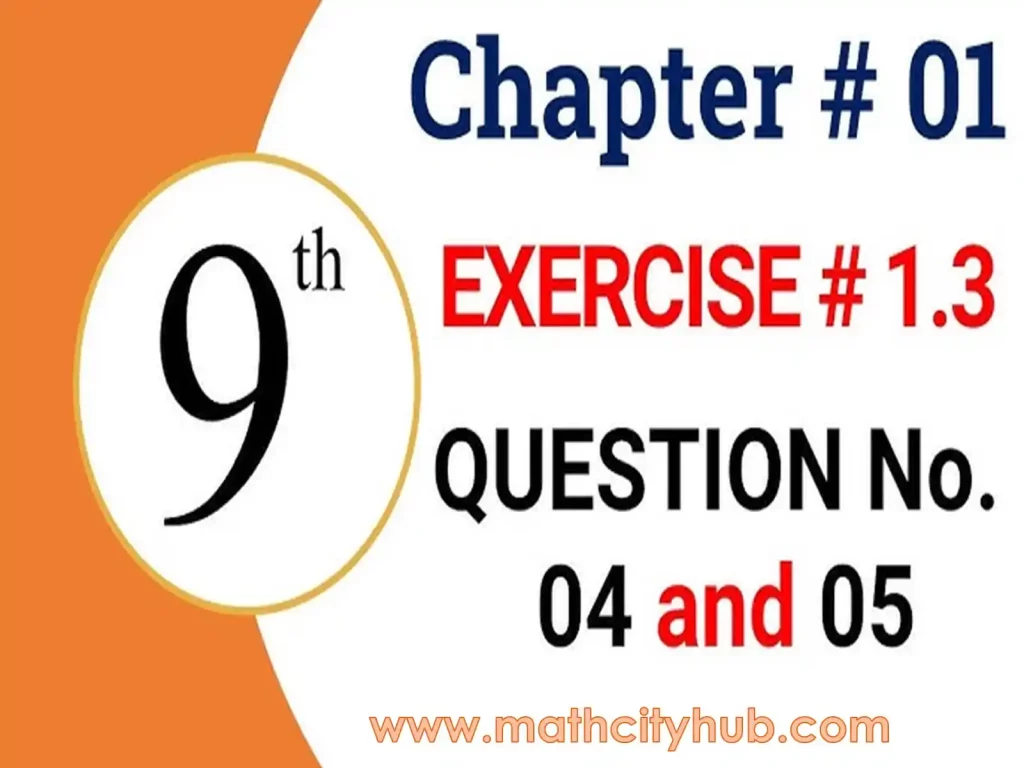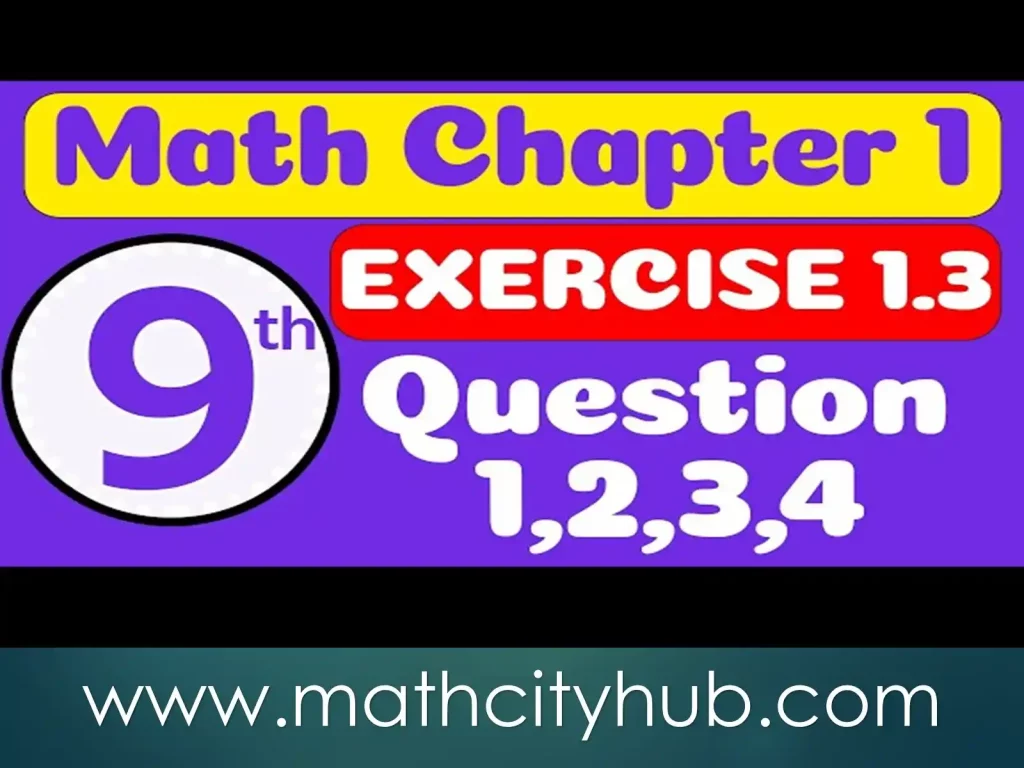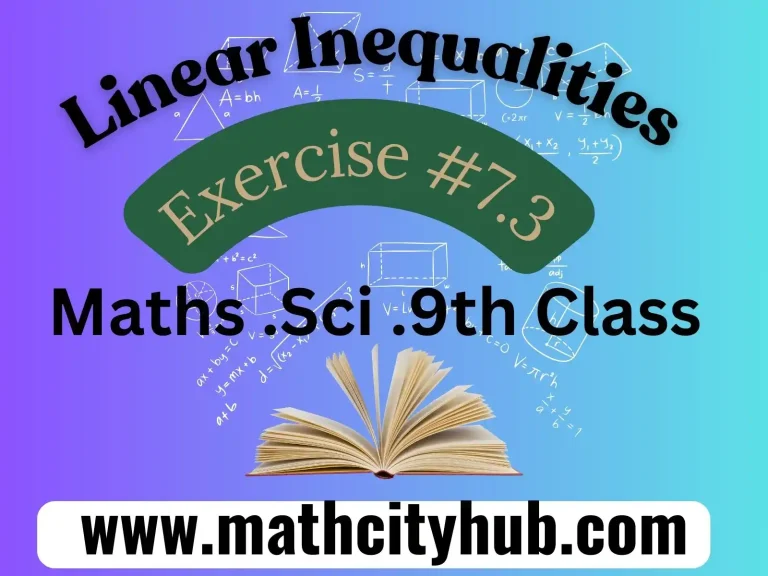Exercise 1.3:This exercise introduces the concept of matrices and their basic operations. A matrix is a rectangular arrangement of numbers arranged in rows and columns.
Matrices can be used to represent a variety of mathematical objects, such as systems of linear equations, vectors, and transformations.
The basic operations on matrices include addition, subtraction, multiplication, and scalar multiplication. These operations can be performed in a similar way to the corresponding operations on real numbers, with a few additional considerations.
For example, to add two matrices, the corresponding elements of each matrix are added.
To multiply two matrices, the elements of each row of the first matrix are multiplied by the corresponding elements of each column of the second matrix, and the products are added together.
Matrices are a powerful tool for solving mathematical problems. They can be used to solve systems of linear equations, find the inverse of a matrix, and perform other complex operations.
Exercise 1.3 of the Mathematics 9th class Punjab textbook contains a variety of questions on the following topics:
- Definition and types of matrices
- Basic operations on matrices
- Transpose of a matrix
- Scalar multiplication of a matrix
- Inverse of a matrix
- Here are some tips for solving the questions in Exercise 1.3:
- Carefully read the question and understand what it is asking.
- Identify the matrices that are given in the question.
- Determine the operation that you need to perform on the matrices.
- Follow the steps for performing the operation correctly.
- Check your answer to make sure that it is correct.

Addition of Matrices
Two matrices of the same order can be added by adding the corresponding elements of each matrix. Exercise 1.3:
For example, let A and B be two matrices of order 2 × 2, then their sum is given by:
A + B = [[A11 + B11, A12 + B12], [A21 + B21, A22 + B22]]
where Aij and Bij are the elements of matrices A and B respectively.
Subtraction of Matrices
Two matrices of the same order can be subtracted by subtracting the corresponding elements of each matrix.
For example, let A and B be two matrices of order 2 × 2, then their difference is given by:
A – B = [[A11 – B11, A12 – B12], [A21 – B21, A22 – B22]]
where Aij and Bij are the elements of matrices A and B respectively.
Examples
Example 1:
Find the sum and difference of the following matrices:
A = [[1, 2], [3, 4]]
B = [[5, 6], [7, 8]]
Solution:
Sum of A and B:
A + B = [[1 + 5, 2 + 6], [3 + 7, 4 + 8]]
A + B = [[6, 8], [10, 12]]
Difference of A and B:
A – B = [[1 – 5, 2 – 6], [3 – 7, 4 – 8]]
A – B = [[-4, -4], [-4, -4]]
Example 2:
Find the sum and difference of the following matrices:
A = [[1, 2], [3, 4]]
B = [[5, 6], [7, 8]]
C = [[1, 2], [3, 4]]
Solution:
Sum of A and B and C:
A + B + C = [[1 + 5 + 1, 2 + 6 + 2], [3 + 7 + 3, 4 + 8 + 4]]
A + B + C = [[7, 10], [13, 16]]
Difference of A and B and C:
A – B – C = [[1 – 5 – 1, 2 – 6 – 2], [3 – 7 – 3, 4 – 8 – 4]]
A – B – C = [[3, -8], [-7, -12]]
Properties of Addition and Subtraction of Matrices
- Addition of matrices is commutative, i.e., A + B = B + A.
- Subtraction of matrices is not commutative, i.e., A – B ≠ B – A.
- Addition of matrices is associative, i.e., (A + B) + C = A + (B + C).
- Subtraction of matrices is not associative, i.e., (A – B) – C ≠ A – (B – C).
- The zero matrix is the additive identity for matrices, i.e., A + 0 = A.
- The negative of a matrix is the additive inverse of the matrix, i.e., A – A = 0.
Applications of Addition and Subtraction of Matrices
Addition and subtraction of matrices are used in various fields, such as linear algebra, physics, engineering, and economics. For example, they are used to solve systems of linear equations, to find the resultant force on a particle, and to calculate the cost and revenue of a business. Exercise 1.3:

Questions & Answers
Questions:
- What is the difference between addition and subtraction of matrices?
- What are the properties of addition and subtraction of matrices?
- Give some examples of addition and subtraction of matrices.
- What are the applications of addition and subtraction of matrices?
- How can we find the sum and difference of two matrices using Python?
Answers:
- The difference between addition and subtraction of matrices is that addition of matrices involves adding the corresponding elements of each matrix, while subtraction of matrices involves subtracting the corresponding elements of each matrix.
- The properties of addition and subtraction of matrices are as follows:
- Addition of matrices is commutative, i.e., A + B = B + A.
- Subtraction of matrices is not commutative, i.e., A – B ≠ B – A.
- Addition of matrices is associative, i.e., (A + B) + C = A + (B + C).
- Subtraction of matrices is not associative, i.e., (A – B) – C ≠ A – (B – C).
- The zero matrix is the additive identity for matrices, i.e., A + 0 = A.
- The negative of a matrix is the additive inverse of the matrix, i.e., A – A = 0.

- Here are some examples of addition and subtraction of matrices:
Example 1:
A = [[1, 2], [3, 4]]
B = [[5, 6], [7, 8]]
Sum of A and B:
[[1 + 5, 2 + 6], [3 + 7, 4 + 8]]
[[6, 8], [10, 12]]
Difference of A and B:
[[1 – 5, 2 – 6], [3 – 7, 4 – 8]]
[[3, -4], [-4, -4]]
Example 2:
A = [[1, 2], [3, 4]]
B = [[5, 6], [7, 8]]
C = [[1, 2], [3, 4]]
Sum of A and B and C:
[[1 + 5 + 1, 2 + 6 + 2], [3 + 7 + 3, 4 + 8 + 4]]
[[7, 10], [13, 16]]
Difference of A and B and C:
[[1 – 5 – 1, 2 – 6 – 2], [3 – 7 – 3, 4 – 8 – 4]]
[[3, -8], [-7, -12]]
- Addition and subtraction of matrices are used in various fields, such as linear algebra, physics, engineering, and economics. For example, they are used to:
- Solve systems of linear equations
- Find the resultant force on a particle
- Calculate the cost and revenue of a business
- To find the sum and difference of two matrices using Python, we can use the following code: Exercise 1.3:
Question: What are the conditions for adding or subtracting two matrices?
Answer: To add or subtract two matrices, they must have the same dimensions. This means that they must have the same number of rows and the same number of columns.
Question: What is the additive inverse of a matrix?
Answer: The additive inverse of a matrix is a matrix that, when added to the original matrix, results in the zero matrix. The additive inverse of a matrix can be found by multiplying each element of the matrix by -1.
Question: What are the properties of addition and subtraction of matrices?
Answer: Addition and subtraction of matrices are commutative and associative. This means that the order in which matrices are added or subtracted does not matter, and the grouping of matrices does not matter.
Question: Give an example of how to add and subtract matrices.
Answer: To add two matrices, we simply add the corresponding elements of each matrix. For example, if we have the following two matrices:
A = [[1, 2], [3, 4]]
B = [[5, 6], [7, 8]]
then the sum of the two matrices is:
C = A + B = [[6, 8], [10, 12]]
To subtract two matrices, we simply subtract the corresponding elements of each matrix. For example, if we subtract the matrix B from the matrix A, we get:
D = A - B = [[1, -4], [-4, -4]]
Question: What are some applications of addition and subtraction of matrices?
Answer: Addition and subtraction of matrices are used in many different areas of mathematics, including linear algebra, statistics, and physics. For example, addition and subtraction of matrices are used to solve systems of linear equations and to perform operations on vectors.
I hope these questions and answers are helpful. Please let me know if you have any other questions.

Conclusion
In conclusion, addition and subtraction of matrices are fundamental operations in linear algebra. They are used in a variety of fields, such as physics, engineering, and economics. Addition and subtraction of matrices are relatively simple to perform, and they have a number of useful properties.
Here are some key takeaways about addition and subtraction of matrices:
- Two matrices can only be added or subtracted if they have the same dimensions.
- To add or subtract two matrices, we simply add or subtract the corresponding elements of each matrix.
- Addition of matrices is commutative, but subtraction of matrices is not.
- Addition of matrices is associative, but subtraction of matrices is not.
- The zero matrix is the additive identity for matrices.
- The negative of a matrix is the additive inverse of the matrix.
Suggested Read:
- Exercise.1.2. Types Of Matrices.
- Exercise 1.1: Introduction to matrices
- Explanation of A Square B With Example
- Explanation of Abstract Algebra Problems
- Easy Way to Learn A Cubed minus B Cubed
- Best 7th Grade Math Formulas for Children
- Derivation of A Square Minus B Square With Example
- Types of A Specific Formula for Solving a Problem Is Called
Math 9th class Full Book
EXERCISE 1.3
Azam Bodla
M.Phil. Mathematics, Content Writer, SEO Expert
Web Developer, Online Tutor
Call or WhatsApp: +923059611600
Gmail:azambodlaa@gmail.com






